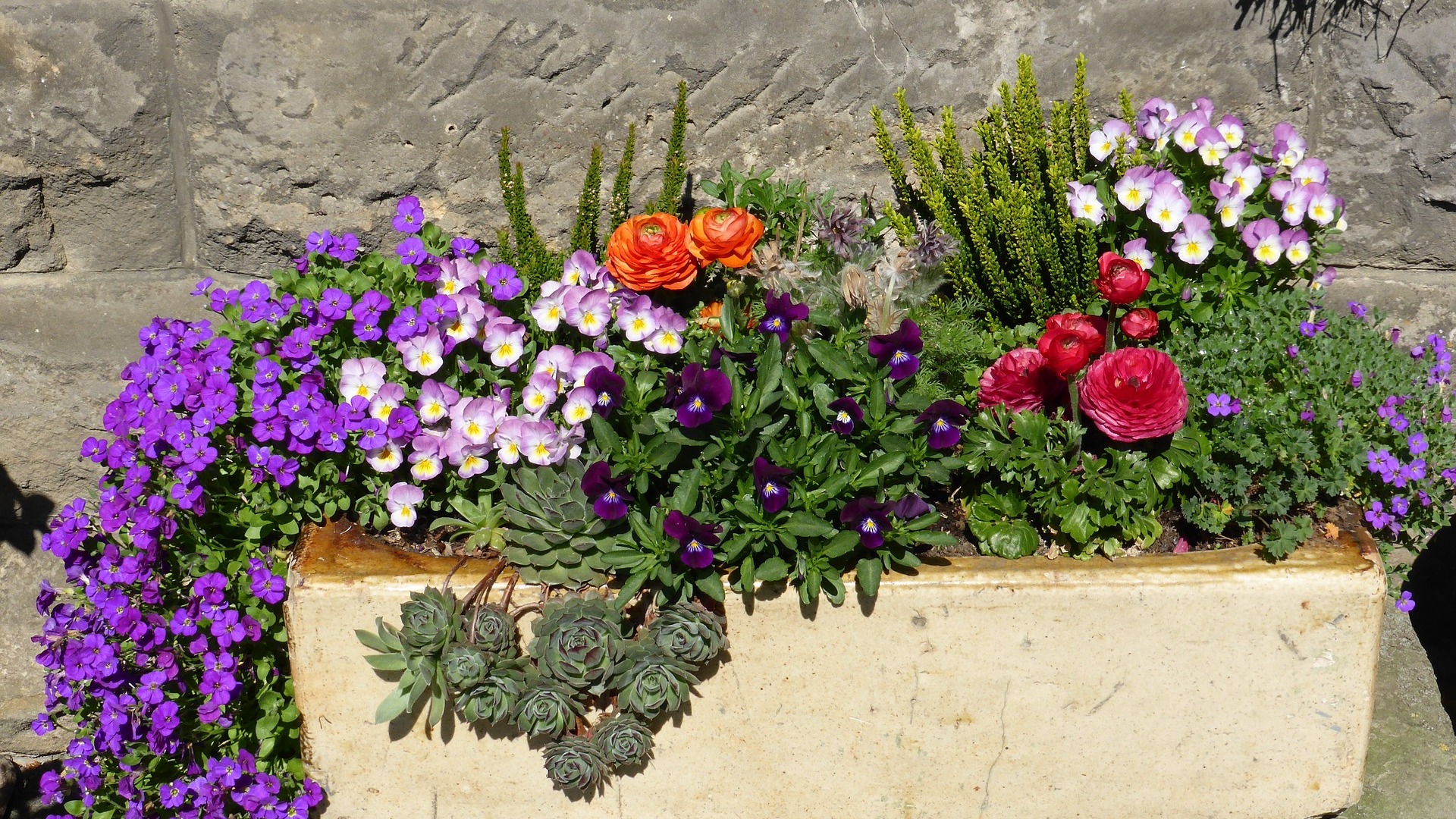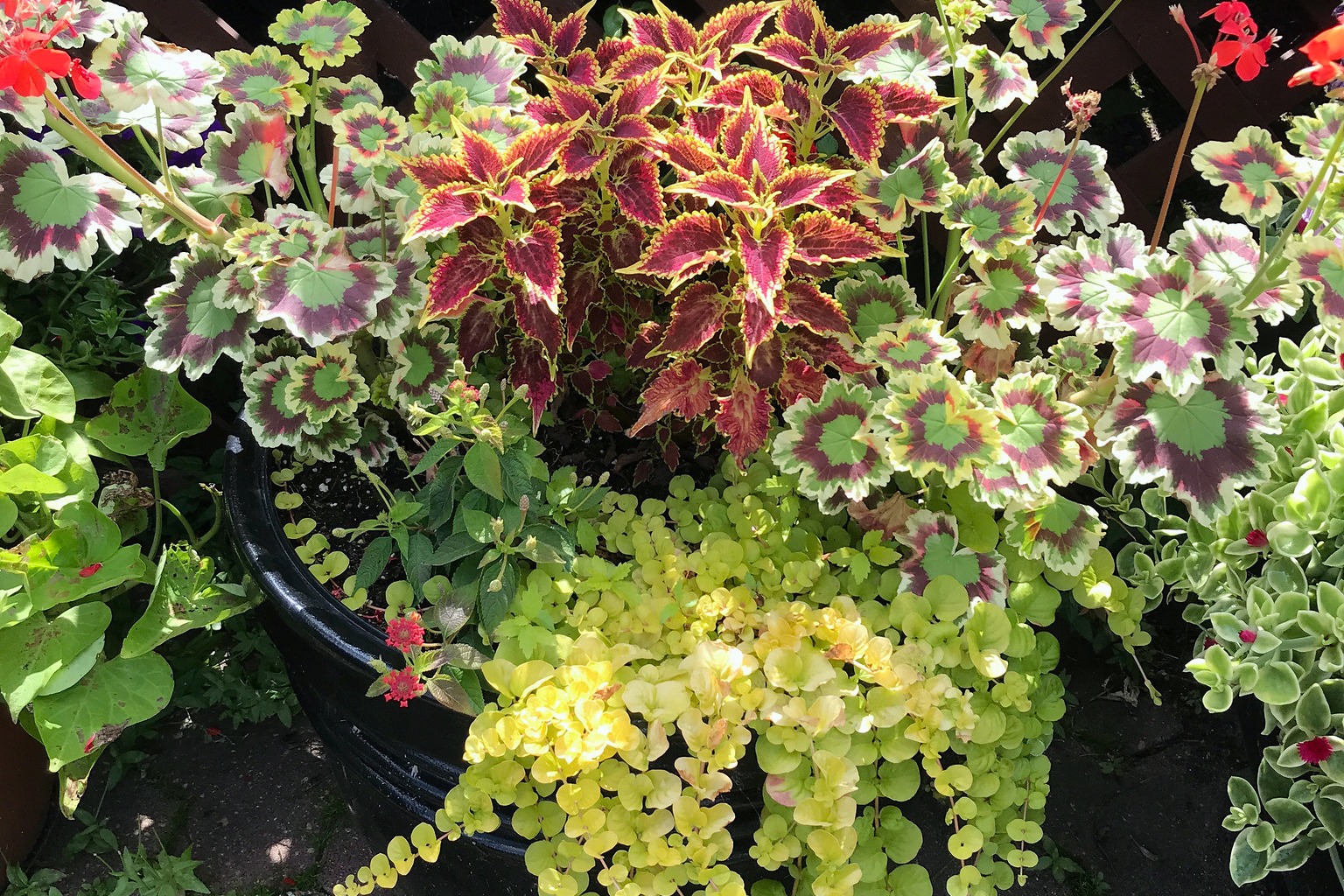The other day a friend and I were brainstorming ideas for the ongoing furnishing of her back deck. Comfortable, attractive seating: done. Outdoor rug: check. Planters? We decided tall pots would be best, as they both add drama and raise the plants closer to eye level. But, said my friend, “I would have no clue how to combine plants, especially what looks best together and what ones are compatible.”
I vaguely remembered that there is some sort of catchy formula for combining plants in containers of any style. Finally it came to me: thrillers, fillers, and spillers!
Thrillers are large, upright plants with dramatic features—showy flowers, colourful foliage, or unusual shape—that form the centrepiece of the arrangement. Spillers cascade over the edge of the container, anchoring it to the composition. Fillers have a mounded shape with a height in between the thriller and spiller, which they link together.

Photo by Bernd Strohbach/Pixabay.
Beyond that framework, look for plants with a balance of colours and textures as well as compatible light and water needs.
Do you want the arrangement to last year round—in which case use perennials—or are you just looking for this season? Or you could mix year-round plants—say, the thriller and/or spiller—with others that are replaced seasonally.
As for any plants, bear in mind their growing requirements. At the garden centre, check the plant tag, if there is one, for information on light preferences, ultimate height, water use, and cold hardiness. The clearest hardiness measurement is the minimum temperature the plant can survive.
Tags may also, or alternatively, indicate a hardiness zone: in Vancouver, plants rated Zone 8 or lower should survive outside in winter. That doesn’t mean you can’t choose more tender species rated for higher zones—just use them in sheltered locations or the warmer months.
Like most living things, plants need water to survive but, given too much, will drown. Sitting in water cuts off oxygen to the roots and causes them to rot.
Unglazed terra cotta pots breathe, and containers with holes in the bottom allow water to drain. Drilling holes in plastic, wood, or even metal containers is straightforward, but ceramic pots will need a special drill bit and careful handling. Ask whether the garden centre can do it for you.

Photo by Daryl Mitchell/Flickr.
Another alternative, especially if you don’t want water draining onto your deck, is to use another pot inside the container, raised on rocks or an upturned pot. Some planters even have drainage reservoirs, raised pegs inside, or internal containers that rest on top.
Plants in pots tend to need watering more frequently than those in the ground, especially during hot weather. To judge when, touch the top of the soil with your finger. If it’s dry just below the surface, thoroughly soak the soil with water until it runs out the bottom. Let dry before rewatering. Until then, sit back and watch your thrillers, fillers, and spillers grow.
Keep growing with more stories on Gardening.









